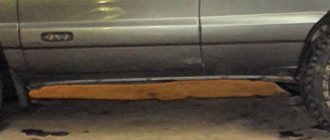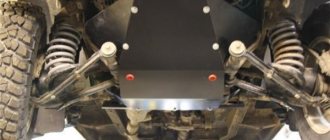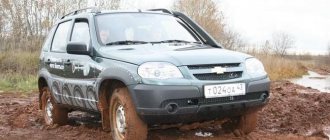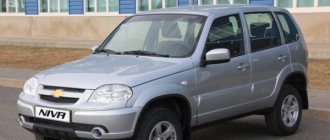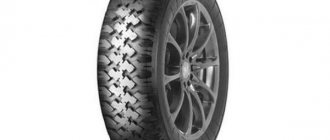One of the most interesting and respected creations of the domestic automobile industry is the Niva car.
This Soviet and then Russian SUV was highly popular and was even exported to other countries of the world. Based on it, a considerable number of modifications were created, many of which are little-known, but very interesting. The first Niva rolled off the assembly line in 1977 and immediately won the hearts of motorists. Under the hood was an in-line engine with a capacity of 80 horsepower per 1.6 liter. It was equipped with a four-speed gearbox. Slightly different models were sent for import - with a 1.3-liter engine.
Lada Niva iKRA
In most cases, visible changes are made during modification. This was the case with an SUV called Lada Niva iKRA. These cars were produced for a short time from 1993 to 1995, and they were supplied to the Spanish automobile market. To attract foreign buyers, it was decided to make the car’s interior more comfortable and use a bright body kit.
Technical parameters and equipment of the car
Niva car review
VAZ 2121 (Lada Niva 4x4x)
This model was produced from 77 to 93. It was equipped with an engine with a power of 75 horsepower, the volume of the unit was 1.6 liters, and the equipment also included a four-speed gearbox. It was with this car that the serial production of SUVs of the Soviet automobile industry began.
VAZ 21211 (Lada Niva 1.3)
This model was produced for export to those countries where there was an official tax on cars that had engines larger than 1.5 liters. The model was not very popular, because the engine power of 69 horses with a volume of 1.3 liters was not enough to drive off-road, and on ordinary roads its dynamics suffered from such parameters.
VAZ 2122 (Lada Niva 4×4)
This model differed from the standard version in that the steering wheel was located on the right side. It was produced focusing on the UK car market, but history records that this model was also supplied to the islands of Japan.
VAZ 2122.600
Officially, this model was called “River”. It was developed specifically for use by the army. It was an amphibious vehicle, which was equipped with the same components and assemblies as the VAZ 2121. After some modifications, the car began to be equipped with a sealed two-door body. But the car never entered production, even after successfully passing all state tests.
VAZ 21213
Could not become "Taiga", although its official name is "Taiga". If we compare it with the first option, then it is worth saying that this car was equipped with a unit with a volume of 1.7 liters and had a power of 81.8 horsepower. Greater power and reduced fuel consumption were achieved through changes made to the carburetor and ignition system. The model also received improved forms of lights and rear doors, and this is only a small part of the innovations that were implemented in this model.
VAZ 21214 (Lada 4×4)
This model was modified by installing central fuel injection from the Taiga version. In 2002, this model 21214-10 was equipped with a motor that met Euro-0 standards; four years later, 21214-20 received a unit that met Euro-2 requirements. And in the same year the model was renamed Lada 4x4 with three doors. And already in 2008, engines were installed on the 21214-30 car that operated according to Euro-3 requirements.
VAZ 21215
This Niva model was produced for 8 years from 1999 to 2007 and was intended for export. In addition to the diesel engine from the Peugeot XUD 9SD, this model was equipped with an improved bumper, spoilers, alloy wheels and many other parts
VAZ 21216
This model is called “Taiga” and has a steering wheel located on the right side, is equipped with a carburetor unit, and was produced for export. The VAZ 21217 model was also produced on the Taiga platform, only it was equipped with a 1.3-liter engine.
VAZ 21219
A variation of this car is a hybrid model of the first Taiga, from which it received the suspension and body, but from model 21213 it received the engine and transmission. The car was produced for two years in the nineties.
VAZ 2121B
To produce this variation of the vehicle, they took the VAZ 2121 as a basis; on its platform, through the joint efforts of VAZ and BRONTO, an armored vehicle was produced, intended for collectors.
VAZ 2121F
This car was a commercial vehicle. It was intended for export to foreign countries, where the law provides benefits for this type of car. The van-type version, that is, it is a combination of modifications of the VAZ 2121 and 21213, part of the rear interior was converted into a cargo compartment. A tubular type guard was added behind the seats in front, which helps keep the cargo secure if the vehicle brakes hard.
Lada 4x4M
This model is one of the latest modifications of the Niva. It was created on the VAZ 21214 platform, with improved lighting devices and components from the Chevrolet Niva added. The main components in the transmission and the interior of the car were also changed.
If we consider the extended versions of the Niva, then the Force, Landole and the five-door Lada 4x4 are especially interesting.
Force or VAZ 212180
This is a car for collectors. It has the maximum level of safety in every respect: the car is armored, the equipment includes a fire extinguishing system in the engine compartment, and there is also a fireproof fuel tank. The additional weight, which is 430 kg, is compensated by equipping the car with reinforced shock absorbers and also a suspension with an increased diameter.
Landole (VAZ 212183)
This car was created for recreation. This SUV is produced only according to individual customer orders. A power frame made of pipes makes it possible to stretch the awning during bad weather. The seats are covered with leatherette, which makes it very easy to wash or wipe down the car interior. The interior is painted in a combination of two colors, and the car also has plastic body kits, which complements the beach appearance, making it more interesting and original.
Five-door Lada 4x4
They used the VAZ 21213 as a platform. Since 1993, they have mastered the production of its extended version by 50 centimeters. They also changed the wheel base, increased the distance between the seats in the cabin, and equipped the car with a larger fuel tank; these are innovations that are the pride of the manufacturers. The body is painted green, for which the car was popularly nicknamed “crocodile”.
test drive Lada Niva 4x4
All available variations of the Niva car have properties that unite them, for example, they are unpretentious to road conditions and their low cost. In almost 35 years of its existence, the Niva has become a classic of the domestic automobile industry, and to this day it remains comfortable, suitable for any weather conditions and for any weather. The “feature” of the car can be considered its high ground clearance and permanent all-wheel drive, which makes it a favorite for many generations.
Lada Niva Special
This is a modification of a classic SUV, created by the Czech company Autolada CZ. The cars were modified in Prague in very small batches. The masters modified the classic version by extending the rear protrusion and installing wings. You could buy such a car in the Czech Republic and Slovakia. Interestingly, the buyer could choose a cargo version called Praktik, which had only two seats and a simple passenger version.
Deutsche Lada Niva Cabrio
German masters were interested in changing the Soviet Niva. So in 1983, based on this SUV, Deutsche Lada Automobil GmbH, which was the official importer of these cars, introduced a convertible, which completely lacked side pillars and roof strength elements. But a tubular frame appeared, with which they decided to strengthen the body.
The new version has front seats with head restraints, enhanced lateral seat support and seat belts. Additionally, plastic fender extensions were used, which were painted in the color of the car and gave it a more impressive look.
Other models based on Niva
VAZ-2328 "Wolf"
VAZ-2328 “Wolf” is a pickup truck with a short 2-seater cab based on the VAZ-2131 model. It was supposed to go into production in parallel with the VAZ-2329 pickup truck, but due to low demand, LADA-Tul produced only an installation batch of Volkov.
VAZ-2329 “Bear”
VAZ-2329 “Bear”, “Niva Pickup”, LADA 4×4 Pickup - a pickup truck with an extended 5-seater cab based on the VAZ-2131 model, produced in small series at the VAZ production plant. The car retains its monocoque body (wheelbase 2700 mm) with a reinforced base and has a rear overhang increased by 300 mm. Load capacity is 650 kg. The VAZ-2329 retains the mechanical part from the VAZ-2129/2131. On request, instead of the VAZ 21213 engine, it was possible to install a VAZ-2130 engine (1.8 l, 84 hp). An additional fuel tank is provided, which brings their total capacity to 84 liters. The rear seat in the cabin is original and when folded forms a flat cargo area. The first releases of the pickup truck bore their own name “Bear”.
FVK-2302 "Bison"
FVK-2302 “Bison” is a pickup truck with a frame chassis based on Niva units. A pickup truck with a short double cab and a wooden platform was produced in small series by one of the small Tolyatti companies in 1993-1995. The reinforced rear suspension of the Bison was made with springs from the Volga and a rear axle from the UAZ
VIS-2346
VIS-2346 is a family of pickup trucks with a semi-frame chassis based on Niva units produced in Tolyatti, produced since 1996. Currently, two versions of the pickup truck are produced in small series: VIS-2346 with a short double cab and VIS-23461 with an extended 5-seater cab. Previously, the VIS-23464 pickup truck with a one-and-a-half four-seater cab and the VIS-2348 pickup truck with cabin panels from LADA Samara 2 were also produced. The reinforced rear suspension is made of springs.
BRONTO-1922 “March-1”
BRONTO-1922 “Marsh-1” is a snow and swamp-going vehicle (“pneumatic”) on ultra-low pressure wheels on VAZ-21213 units. It has been produced in small batches by JSC SPA BRONTO since 1997.
VAZ-21213 “Laura”
NIVA Laura is an armored car with hinged doors, based on hidden armor technology. The car was intended mainly for collectors, but could also be used for other purposes. Full-length curved glass provided the crew with a high degree of visibility, and hinged doors made it possible to quickly load or unload crew and valuables.
Bronto-212182 "Force"
Niva cars are often used as a basis for creating unusual modifications. One of the interesting solutions is an armored vehicle, called “Force”, in which the armor and glass are capable of withstanding a 5.45 mm Kalashnikov burst. and 7.62 mm. This model was developed for collectors. Additionally, it was equipped with an air conditioner, another battery, and a fire and explosion-proof fuel tank.
Extended varieties of "Niva"
VAZ-212180 “Fora”
VAZ-212180 “Fora” is a version of model 21213 extended by 300 millimeters. It was produced in small series from 1996 to 2005 (VIN code “X7G”). It differs from the base model in having wider doors and doorways, a raised rear roof due to a plastic superstructure and a wider rear three-seater seat type 2108. The standard equipment of the Fora includes an automatic fire extinguishing system in the engine compartment from the Force armored car, and surcharge - power steering, air conditioning and a plastic guard in front of the radiator grille. Due to the use of wheels of increased diameter (alloy wheels made from Togliatti with Nokian HRC tires), the spare tire is moved out of the engine compartment and secured above the rear bumper.
VAZ-212182 “Force”
VAZ-212182 “Force” is an armored cash-in-transit version of the VAZ-21218 model. In addition to the reservation system, it is additionally equipped with an automatic fire extinguishing system in the engine compartment and an explosion-proof fuel tank; additional battery, air conditioning, remote control of the right door lock from the driver's seat. An armored floor, beacons, etc. are offered as additional equipment. Since the Force is 430 kg heavier than the Fora, suspension springs made from a rod of increased diameter and reinforced shock absorbers are used.
VAZ-212183 "Landole"
VAZ-212183 “Landole” is an open beach SUV based on the “Fora” with a body type “Lando” or “Landole”. SPA BRONTO has been produced to individual orders since 1997. The absence of part of the roof and door pillars is compensated by an original load-bearing tubular frame, onto which, if necessary, a lightweight awning is attached or brackets are mounted for transporting large-sized sports equipment. The tailgate hinges on horizontal hinges. The interior is easy to clean (the seats are covered with leatherette, the floor is covered with soft linoleum). The exterior is complemented by an original plastic body kit and two-tone paint.
VAZ-2129
VAZ-2129 (unofficial name “Cedar”) is a model extended by 500 mm based on the standard VAZ-21213. “Kedr” was created in the early 90s as a carrier of units for the promising minivan VAZ-2120, but in 1992-1994. Produced in a small series at AvtoVAZ OPP. The body was lengthened due to the central insert. Served as the basis for the creation of the 5-door VAZ-2131 model.
Bronto-212183 "Landole"
This model was also presented. The classic Niva has been greatly modified. The upper part of the body was completely removed and a safety cage was installed in its place. The doors were completely removed, and small plastic stops appeared instead. The usual trunk is also missing here, which has been replaced by an open side. This model was produced in 1998-2009.
VAZ-2123 and Chevrolet Niva
VAZ-2123
VAZ-2123 is a Russian compact SUV of the second generation, pilot production batches of which were produced at VAZ in 2001-2002. It maintained continuity with the old Niva in terms of units and received a new, more spacious five-door body. AvtoVAZ did not have the funds to introduce it into mass production, and as a result, the license for the VAZ-2123 and the rights to the Niva brand were sold to the General Motors concern.
Chevrolet Niva (Chevrolet Niva)
American designers made about 1,700 changes to the design of the VAZ-2123, which allowed the Chevrolet Niva to be considered an independent design. Since September 2002, after the launch of a joint production line with General Motors (OJSC JV GM-AvtoVAZ), the VAZ-2123 began to be produced under the Chevrolet Niva brand.
Chevrolet Niva (Chevrolet Niva) FAM-1
The first batch of Chevrolet Niva FAM-1 cars was released in the spring of 2006, production began in November 2006. The car received the VAZ-21236 index and was produced in a single GLX configuration. The car was equipped with an Opel Z18XE engine (1.8 l, 122 hp) and a 5-speed Aisin manual transmission (from Suzuki Grand Vitara), a new transfer case in a single unit with the gearbox. At the end of April 2008, the Chevrolet Niva FAM-1 model was discontinued. In two years, only about a thousand Chevrolet Niva FAM-1 were made and sold.
Chevrolet Niva Trophy (Chevrolet Niva Trophy)
There is a tuning modification “Trophy” (Chevrolet Niva Trophy), adapted for off-road use. The main differences from the basic configuration include a mechanical chain tensioner instead of a hydraulic one, installation of a snorkel to avoid water hammer when passing fords, forced shutdown of engine cooling fans, transmission breathers in the engine compartment, self-locking limited-slip differentials in gearboxes, main pairs with a gear ratio of 4.3 (instead of 3.9) in the transmission, a mechanism for attaching an electric winch.
Chevrolet Niva (Chevrolet Niva), restyling 2009
On March 11, 2009, GM-AvtoVAZ made a long-awaited update to the Chevrolet Niva. The new modification received the VAZ-212300-55 index. The famous Italian design studio “Bertone” was involved in creating the new car design. After the update, the appearance of the car began to correspond to the unified corporate style of Chevrolet, while the manufacturer retained the parameters of geometric cross-country ability.
Bronto-1922-55 "Marsh-Combi"
This is a newly modified Niva car, which was transformed by specialists from Bronto. The basis of the transport was the bridges and frame of the UAZ-3151, but the body was used from the VAZ-21213. The first thing that catches your eye is the huge pneumatic wheels, which allow this vehicle to move on low-traffic soils, which is where the name “March” comes from, meaning “swamp” in French. The gearbox, engine and transfer case still remain from the Niva in this seriously updated SUV.
How the legend was created: the history of Niva
In April of this year, the Lada 4X4 celebrates its anniversary: for 40 years now, the model, periodically modernized, has been on the assembly line. Paying tribute to this legendary car, let's remember the main milestones of its history
Editorial
It all started back in 1970, when Chairman of the Council of Ministers of the USSR Alexey Kosygin, as part of the program “blurring the line between city and countryside,” set the teams of VAZ, AZLK and Izhmash the task of creating a comfortable SUV for residents of rural areas.
This is how the VAZ-2121 changed in the process of developing the design and improving the design
The first experimental VAZ-E2121 saw the light of day in 1971. Moreover, his appearance was very far from what we have become accustomed to for forty years. In fact, it was a chassis with a simple tail, on which the concept of a new car was developed - the SUV did not have a frame, which at that time was considered an unheard-of design audacity. Initially, the car was planned to be equipped with a powerful diesel engine, final drives, rear torsion bar suspension and even a tire pressure regulation system, but later they decided to create a simpler version with a high degree of unification with the models already produced by AvtoVAZ, which was economically justified. This prototype allowed the design bureau under the leadership of Peter Prusov to significantly reduce the time needed to create the car. Is a 1.6-liter engine enough, is the gearbox reliable enough, does the car require a center differential lock and downshifts? The answers to all these questions were obtained thanks to the VAZ-E2121. It is interesting that the tests of the car were carried out in the strictest secrecy, and when asked by those interested, the factory workers answered that they were testing a new Romanian SUV.
The VAZ-2121 appeared in a form close to the serial one in 1972. The artist Valery Semushkin worked on the design of the new car. The car, according to the designer’s plan, was supposed to suit residents of both cities and villages. Both a collective farmer transporting his produce to the city market and a worker who decided to go out into the forest to pick mushrooms should feel equally comfortable in it. And since, according to the technical specifications, the car was supposed to have a relatively small trunk, the spare tire, in order to save space, was placed in the engine compartment. At that time, placing the spare wheel on a remote bracket behind the rear door was considered unsightly. In 1973, the VAZ-2E2121, which looked almost like the well-known Niva, was sent on a test run across Central Asia, after which it acquired a headlight cleaner and a rear wiper. An ahometer appeared on the instrument panel, which allowed the driver to monitor the speed when driving in the downshift range of the transmission. In 1974, the car was put up for state tests and in the same year received its own name “Niva”, which was patented. It is interesting that at that time there was no GOST for testing this type of car. After all, the standard testing scheme for SUVs for the Niva was too harsh, but for passenger cars it was the opposite... In the end, they decided to combine both programs, taking into account the versatility of the car. Based on the test results, the car received recommendations for mass production and export. True, before being put on the assembly line, the car received some more improvements. So, the rear “three” lights were replaced with “six” ones, and the headlights were taken from the “six”. The chrome bumper gave way to an aluminum one. A second outside rear view mirror has appeared. The first pilot batch of 50 vehicles was sent to the regions for controlled operation. Representatives of the plant constantly supervised their new product, which made it possible to identify several more “sores”, which were eliminated by April 1977, and the Niva entered the assembly line.
In addition to sales at home, Niva was actively promoted in foreign markets. Over forty years, more than 500 thousand SUVs were sent abroad. This unpretentious, but at the same time quite comfortable SUV has attracted buyers in more than 100 countries around the world. Importers actively re-equipped the car, making it into pickup trucks, convertibles, and styling it according to fashion. In addition, assembly of the model was established in Brazil, Greece, Canada, Panama, Chile, and Ecuador. The Niva was even exported to Japan, becoming the only Soviet car officially sold in this country. By the way, the Japanese, paying tribute to the general designer of Niva, gave Pyotr Prusov in 1986 an advertising brochure for their future Suzuki Vitara with the inscription “To the Godfather of this car.”
In 1978, the VAZ-2121 was awarded a gold medal and recognized as the best car of its class at the international exhibition in Brno. “Niva” has a lot of records. So, in 1998, Niva climbed Mount Everest under its own power, to a height of 5200 meters, in the same year, being dropped by parachute, it ended up in the Arctic and reached the North Pole under its own power, and the next year climbed to the Himalayas to a height of 7260 meters. She also visited Fuji. The reliability of the car is also evidenced by the fact that the production car was able to operate without serious breakdowns for 15 years in Antarctica at the Bellingshausen station. And this is in the complete absence of roads. Niva has a lot of sporting achievements to its credit: multiple participation in the Paris-Dakar rally, Atlas rally, Cameroon Rally and other achievements.
In 2001, the history of the VAZ-2121 as a Niva ended. The holder of the exclusive license for the Niva trademark was the GM-AvtoVAZ joint venture. But the history of the car itself continued and continues under the name LADA 4X4.
1998. “Niva” visited both Antarctica (1990) and the North Pole (1998), more than once conquered peaks under its own power and won victories in marathon rallies
1999. In 1999, "Niva" rose to a height of 5726 m in the mountains of Tibet. Before this, wheeled vehicles never rose to such a height under their own power.
Importers advertised the VAZ-2121 in every possible way in their periodicals; in addition, some of them allowed themselves to adapt the car to their markets through modifications
FOR 40 YEARS, THE LADA 4X4 HAS BEEN ON THE CONVEYOR OF THE VOLGA AUTO GIANT. MANY THINK THAT SHE HAS NOT CHANGED AT ALL DURING THIS TIME. WELL, WE HOPE TO DISCONCEIVE YOU ABOUT THIS. AND HERE WE WILL ONLY GIVE THE MOST NOTICEABLE CHANGES. IF WE'RE TALKING ABOUT SMALL MODERNIZATION, THERE WAS SO MUCH OF IT DURING THIS TIME THAT IT WOULD BE ENOUGH FOR MORE THAN ONE ARTICLE.
APRIL 5, 1977
Assembly of the first production car VAZ-2121 Niva.
1980
Start of production of an export modification of the VAZ-21212 with right-hand drive. The car was produced in limited quantities, primarily for the English market. The vehicles were also supplied to Australia, New Zealand, Mozambique, Japan and Jamaica.
1985
State tests of the floating modification of the Niva - VAZ-2122 (Project "River") have been completed. The State Commission recommended the car for production. The car was positioned as an army SUV for a company commander, but in an open document flow.
1990
Start of production of modification with engine 21214 with central fuel injection. The majority of changes to the engine design are associated with the transition to an injection system, the introduction of elements that ensure compliance with Euro-2 environmental standards and the use of hydraulic compensators. Installing power steering on a car required additional modifications to the engine components.
1993
Start of production of a modification of the VAZ-21213 with a 1.7 liter engine, 5-speed gearbox, updated interior and modernized body. In particular, the third door has been enlarged, which has significantly reduced the loading height. The car also received new lighting equipment.
1995
Start of production of the VAZ-21215 modification with the Peugeot XUD9 diesel engine. It was produced in small series for export, so the package included other bumpers, spoilers, linings, alloy wheels, etc.
1995
The production of VAZ-2131 cars with an extended wheelbase and a five-door body has begun in the AvtoVAZ pilot production facility.
1996
Production of a three-door modification of the VAZ212180 “Fora”, extended by 300 mm, has begun.
1997
The production of VAZ-2329 pickups based on the VAZ-2131 has begun in the pilot production of AvtoVAZ. The vehicle's carrying capacity is 4 people and 350 kg of cargo.
2011
Launch of modifications of the VAZ-21214 with ABS and BAS. The car is partially unified with Niva-Chevrolet. In particular, a new Valeo clutch was installed on it. As a result, the resource of this unit has doubled, and the car itself has become less susceptible to vibration due to a reinforced damper spring and an enlarged disk.
2013
In accordance with the law, daytime running lights in the headlights have been installed on all Lada 4x4 vehicles. Cataphoresis primer and metallic painting have been introduced with a guarantee against through body corrosion for up to 6 years.
2014
In the intermediate shaft, the cardan cross was replaced with a CV joint, which reduced vibrations emanating from the transmission and significantly improved the comfort of the car. A new vacuum brake booster of increased size was introduced - from 8 to 9 inches, a new main brake cylinder with a diameter of 22.22 mm was used instead of 20.64. The result of the modernization was the reliability and durability of the brake system, and the mileage before changing the brake pads increased. The dimension of the shock absorbers was increased, the length and damping characteristics were optimized, which made it possible to increase the dynamic energy intensity of the suspension, the suspension travel from 150 to 170 mm, significantly reduce the galloping effect of the car, and increase the service life of the shock absorbers.
2014
Production of the VAZ-21214 “Urban” configuration has begun with a modified appearance (bumpers, radiator grille), electrical package, air conditioning system and electrically heated seats. The length of the windshield wiper blades has been increased from 330 to 410 mm (the windshield cleaning area has been expanded). Double-jet windshield washer jets have been used (increased washer efficiency).
2016
A transition to Euro 5+ toxicity standards has been carried out, and a modernized hub unit with non-adjustable bearings has been introduced. As standard, cars are equipped with electric windows and ABS. Changes were made to the design of the front axle: it was disconnected from the engine and installed on the front suspension. This decision has led to a reduction in vibrations, which allows, if necessary, to install another (new) power unit on the car.
LADA 4×4: 40 years of achievements
The editors recommend:
Why do piston rings stick and how to prevent it?
A traffic police officer searched my car: did he have the right to do so?
Russians may be left without foreign cars: Western automakers have stopped supplying cars to our country
A ship that was transporting cars to Russia was detained in France
Half of the car factories in Russia have closed
News Media2


